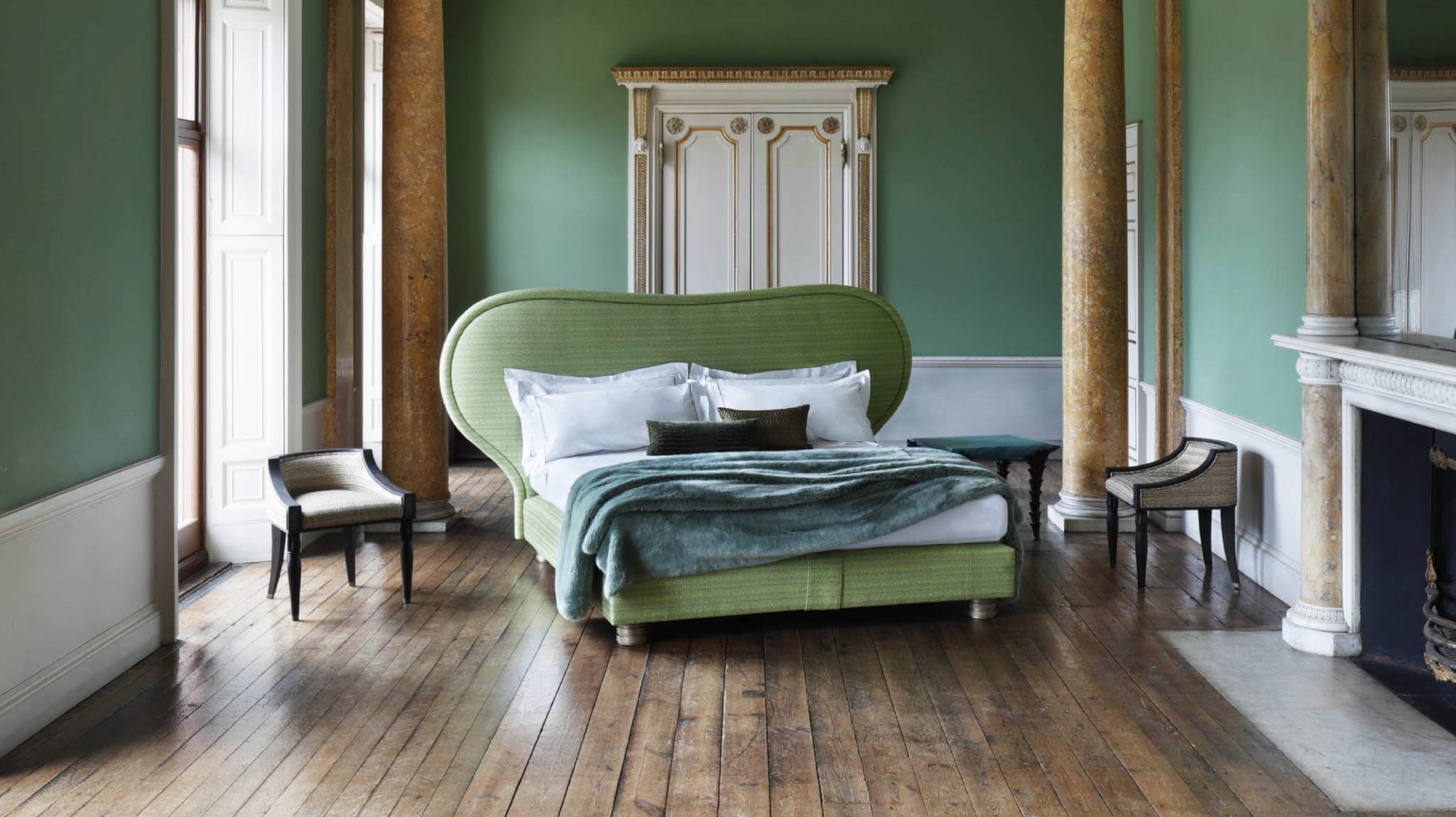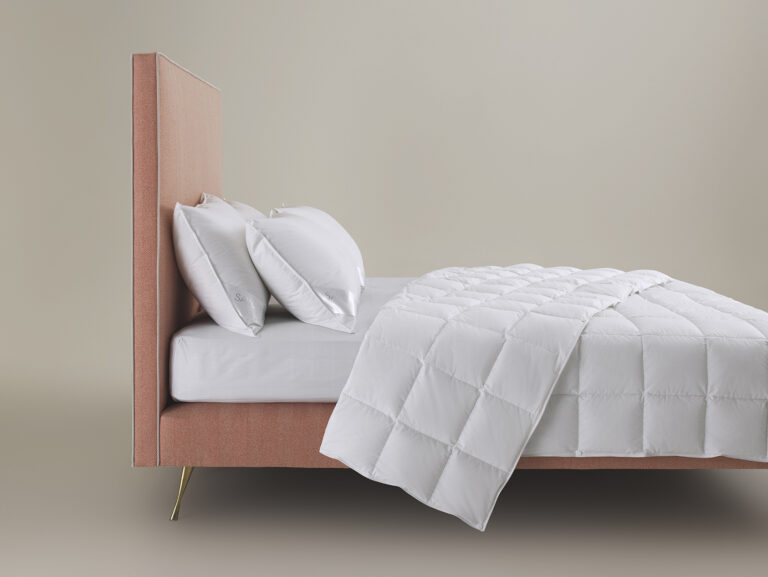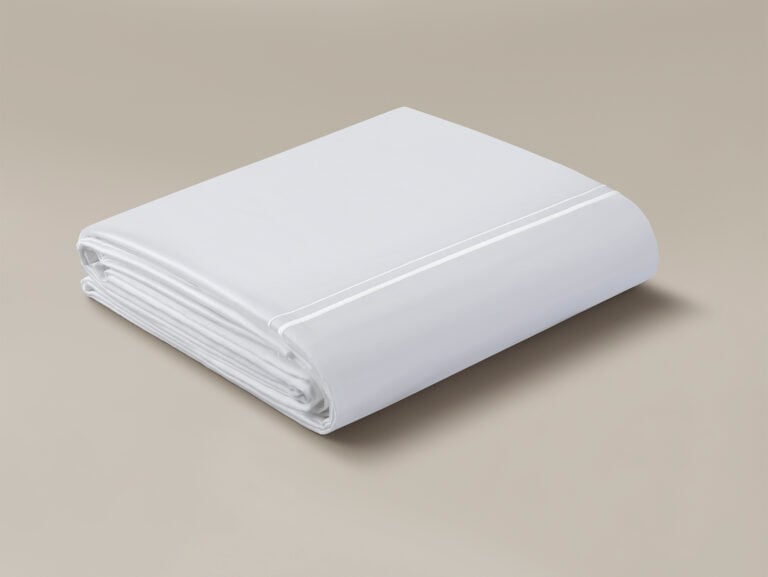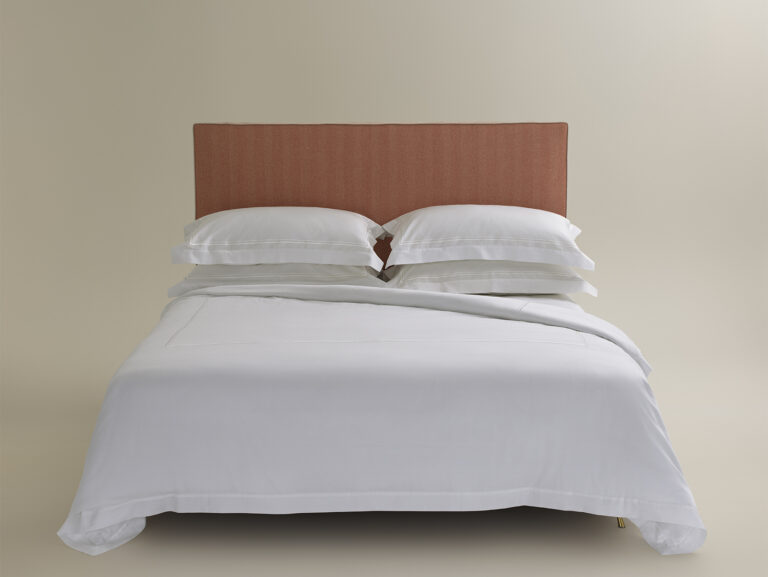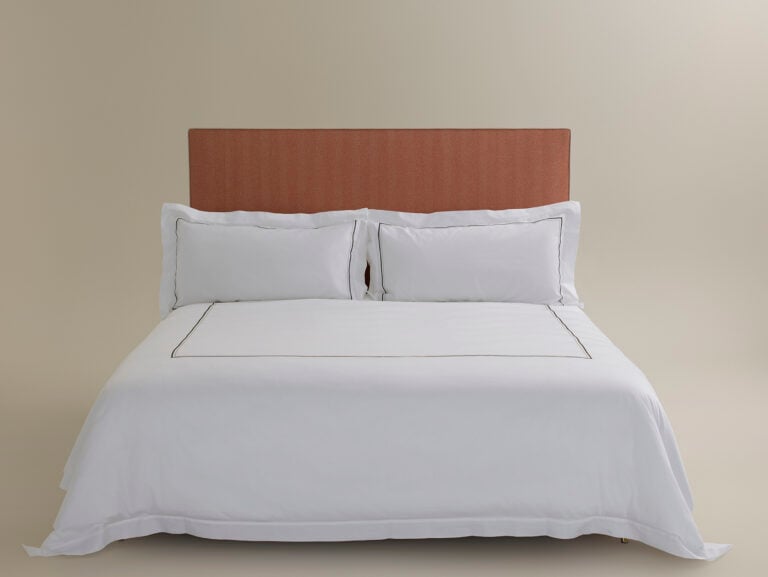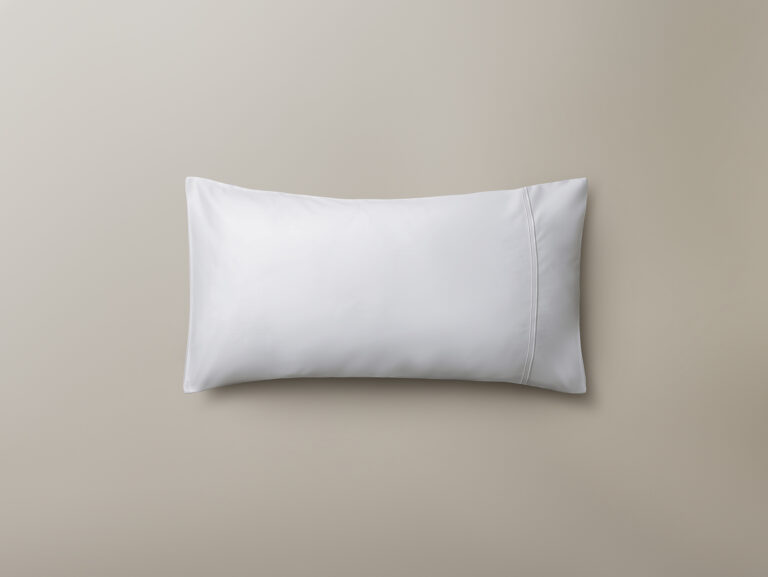Celebrating the imperfect beauty of natural materials
The ancient Japanese philosophy of wabi-sabi is a graceful antidote to the modern world’s constant pursuit of perfection. By embracing the simple rule that “nothing is finished, and nothing is perfect”, we celebrate the unique, natural materials that create our products.

The philosophy brings a sense of freedom and peace through learning to find beauty in imperfection. It encourages the idea of accepting life and all that it encompasses in its organic form. By recognising the simple idea that “nothing is finished, and nothing is perfect”, we rid of expectations and find beauty within.
Craftsmanship embodies this philosophy. We choose to find beauty in the smallest of details through the unhurried method of crafting by hand. Each element, cared for and lovingly refined, reflects the very idea of wabi-sabi. Rather than enforcing a standardised approach, we focus on embracing the flaws and peculiarities of the ingredients that make our products. Because every bed is handmade from inception to completion, no two can be the same. The very idea that this is made for you, and no one else, is quite special.
So, against the fast pace of the modern world, we continue to honour the practises which have been passed down for generations. Although it certainly takes longer, creating a product by hand gives it character. And without it, beauty wouldn’t exist. That’s something mass-producing simply cannot replicate. As the third teaching of wabi-sabi says:
Strive not for perfection, but for excellence instead.

Undoubtedly, nature is where this philosophy is reflected in Western culture. Plants, flowers, and wilderness are all an expression of wabi-sabi. Though not entirely untouched by the modern world’s pursuit of perfection, their natural charisma remains a universal symbol of beauty.
At Savoir, we always favour natural ingredients and ensure they’re at the heart of each of our products. The sumptuous cotton that makes our bed linen is harvested in the valley of the Nile Delta River in Egypt. The South American horse hair lends its temperature-regulating properties to our mattresses and toppers. While exquisite wool, leather and linen that adorn our headboards, are selected because of their unique imperfections.
Meet the materials that celebrate the philosophy of wabi-sabi.

Linen
Linen offers a great range of unique properties. From breathability and moisture-wicking to its excellent durability, thanks to the strength of its fibres. While these properties make it the perfect textile for clothing, its unique aesthetic also makes it an elegant choice for upholstery.
The tiny slubs dotted around the surface of this fabric are the organic, raw texture of linen. It’s what gives it its rare and pared-back appearance, which distinguishes it from other fabrics. Particularly because of those gentle markings, which resemble charming freckles, no two pieces of linen can be the same. Altogether, the combination of its durability and lightweight feel wonderfully nods at its organic nature.
Our Holly Design is upholstered in Mark Alexander’s signature linen. Its delicate, stonewashed effect and matt finish add a gentle feel to the rectangular shape of the headboard. The fusion of the intricate and textural material against the simple shape of the headboard creates a calming effect. Inarguably, this is where the imperfect beauty of organic materials comes from – their ability to transform and elevate.

Wool & Cashmere
Equally adored, wool and cashmere are favoured for their sumptuous softness and versatility. This is thanks to the incredible array of textures, colours, and depths they’re available in. When blended, wool and cashmere create an almost otherworldly fabric. Whilst being the most comfortable and warm blend, it also holds a marvellous feeling of decadence. Its appearance and slight sheen, which delicately reflect even the slightest glimmer of light, are all natural properties of wool.
The organic spirit of this fabric is celebrated in our design with Tom Faulkner, a renowned British furniture designer. The headboard of this design combines the simple shape of a cloud with a unique blend of wool and ramie fabric by Svensson. Also known as China grass, ramie is one of the oldest, natural fibres. Together, the matt texture of wool balanced with the shimmering ramie fibre creates an unusual, characteristic effect.

Similarly, the Amelia Design is upholstered in a unique, directionless wool fabric. Its smooth and consistent surface beautifully fuses the modernity of this design with a classic element that wool brings. The hidden depths of the fabric, which are revealed as the viewer’s perspective changes, are unique to organic wool. The finish of this fabric can be compared to a melange effect, that resembles a blend of complementing colours.
When combined with an unusual and contemporary shape, wool adds an organic element of calmness.
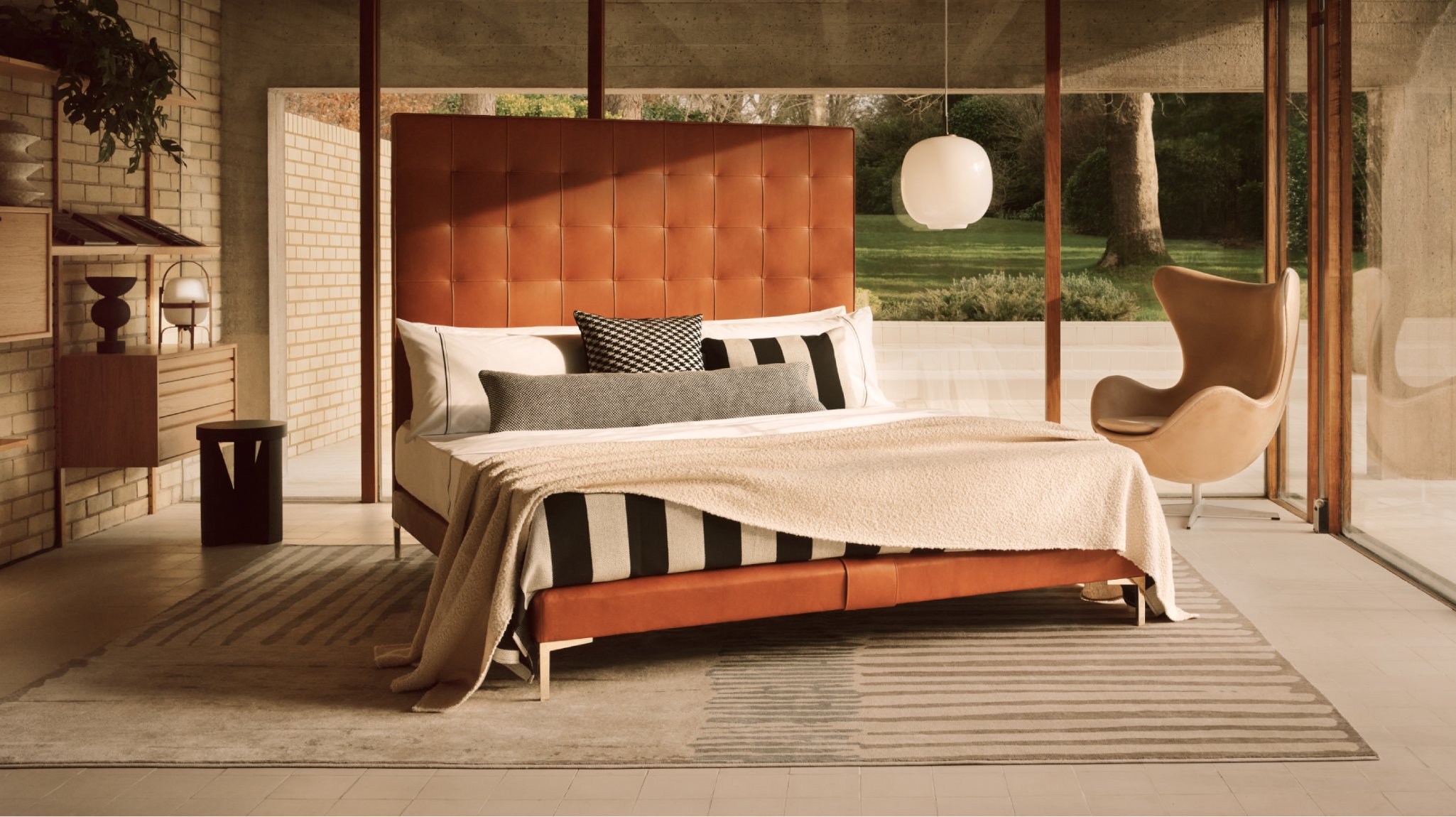
Leather
Leather gained its popularity in the early 1900, becoming the symbol of strength and rebellion for decades. In the late 60s, it began to appear in interior design, adding an unexpected edge and a sense of drama to furniture. Its timeless look and soft feel create a paradoxical element of masculinity. What is most noteworthy about leather, is its unusual structure. Because of the natural origin, it showcases a marvellous array of markings, dimples, and ridges. Altogether, these details add character and charisma, which cannot be replicated in inorganic materials.
Our Winston design is upholstered in Whistler’s cognac leather. Its distinctive colour brings to light the delicate, natural lines that run across the material. The whimsical effect of these resembles storytelling scars, which in the ancient Japanese art form is celebrated as Kintsugi.
Undeniably beautiful, these materials proudly showcase their imperfections. When combined with a carefully handcrafted bed, they celebrate wabi-sabi, creating an antidote to the modern world.
Be inspired
A stylist’s guide to dressing your bed
A perfectly made bed can dramatically impact the look of your bedroom and create an inviting environment for the best night’s sleep. Together with interior stylist, Sania Pell, we look at the art of bedscaping. From choosing the right bedding to adding visual intrigue through patterns and unexpected textures.
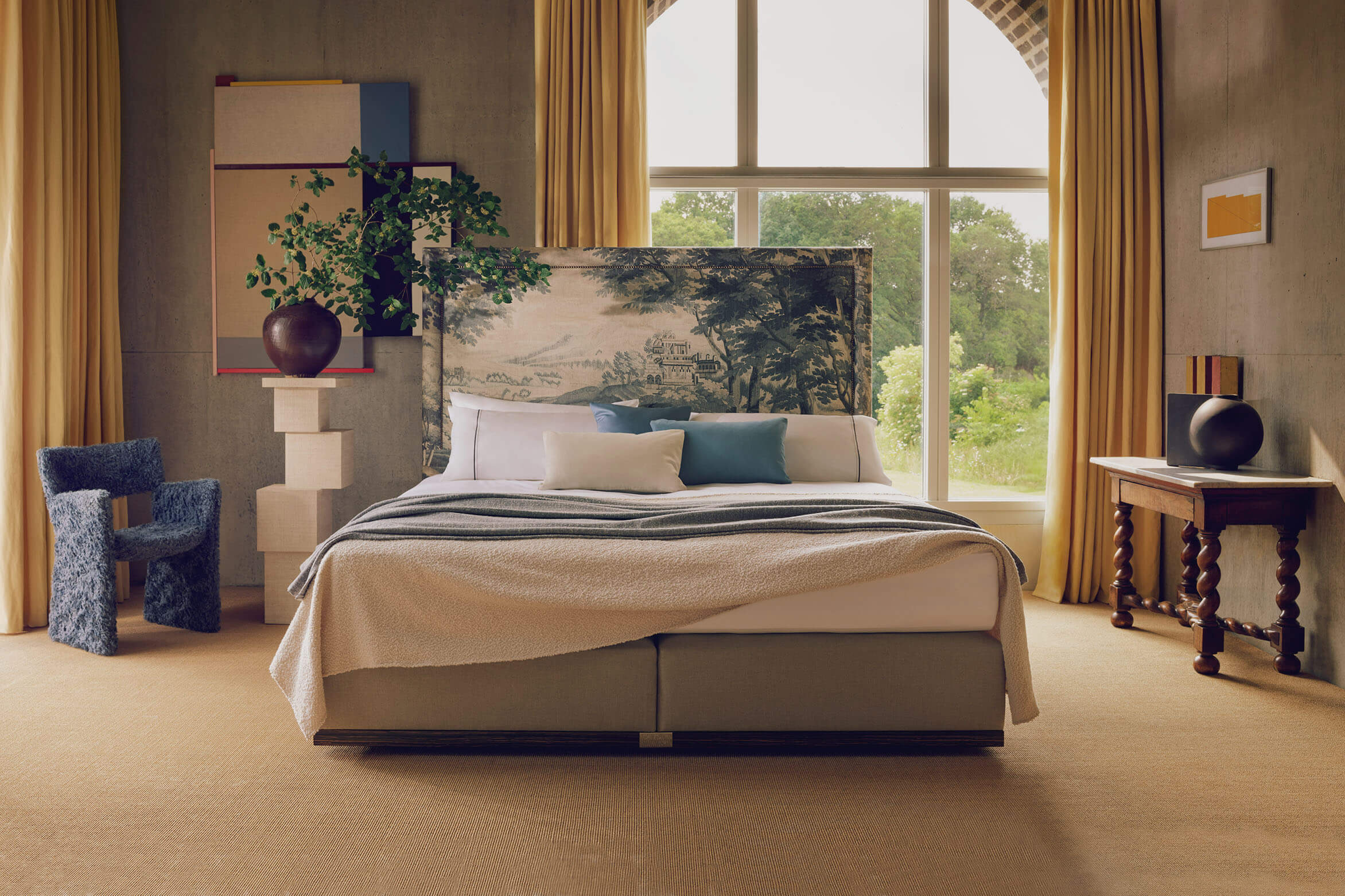
Finding the right accessories to complete your bespoke bed can prove harder than one may think. With an endless choice of textures, prints and patterns, it can be difficult to know where to start. At Savoir, we rely on the best experts to help us choose the right fabrics and colour schemes that complement our designs.
Stylist Sania Pell is one of the experts we have worked with on many occasions. With over 20 years of experience styling some of the most inspiring interiors, including those featured in ELLE Décor, her attention to detail and talent for fusing the unexpected are unparalleled. She has helped us bring to life some of our most iconic designs, ensuring they look as luxurious and inviting as they feel. Together with Sania, we have created a guide that’ll help you dress a bed you won’t want to leave.

Bedding down
Often overlooked, the right bedding can make all the difference in making your bed exude comfort and softness. Down and feathers have a remarkably plush and soft appearance, making your bed look irresistible. They are also favoured for their incredible temperature-regulating properties, which make them the perfect filling to choose for your bedding. A duvet that is slightly bigger than your bed will further elevate that feeling of softness, so if your bed is king size, choose a super king size duvet.
A calming foundation
Choosing the right bed linen comes down to personal preferences. Textural linens like high thread count percale, natural linen and jacquard all make a statement when paired with minimal designs. Softer materials, such as Egyptian Giza cotton sateen, pair best when contrasted against a more intricate design or upholstery. When it comes to picking the right style and finish for your linens, “an Oxford pillowcase gives the impression of a plusher, larger pillow which works well on a bigger bed and headboard. Cording is a subtle way of adding interest and smartens a plain pillow up, making it a sophisticated style statement”, advises Sania.
Cording is a subtle way of adding interest and smartens a plain pillow up, making it a sophisticated style statement.

The colour scheme
When deciding on the right colour scheme for your bedroom, it’s important to think about how you want the room to feel. Psychology of colour advises that delicate earth tones, as well as blues and greens, create a naturally calming and tranquil atmosphere. Bright and vivid colours such as orange, yellow and red, on the other hand, add a joyous and vibrant attitude to interiors.
While your bed and its accessories don’t necessarily need to match the room exactly, it’s crucial that the overall colour scheme of the room feels aligned. “I usually begin by choosing colours that work tonally with the headboard, and then add another contrasting colour to give a little more interest. It could be that a statement chair colour is linked back to the throws and cushions to pull the scheme together,” Sania tells us. “The bed accessories look more considered if they link to other patterns and colours in your bedroom. So, it’s a good idea to begin with these as the base, then add something that is unexpected either in colour or pattern, so the scheme is not too predictable,” she adds.
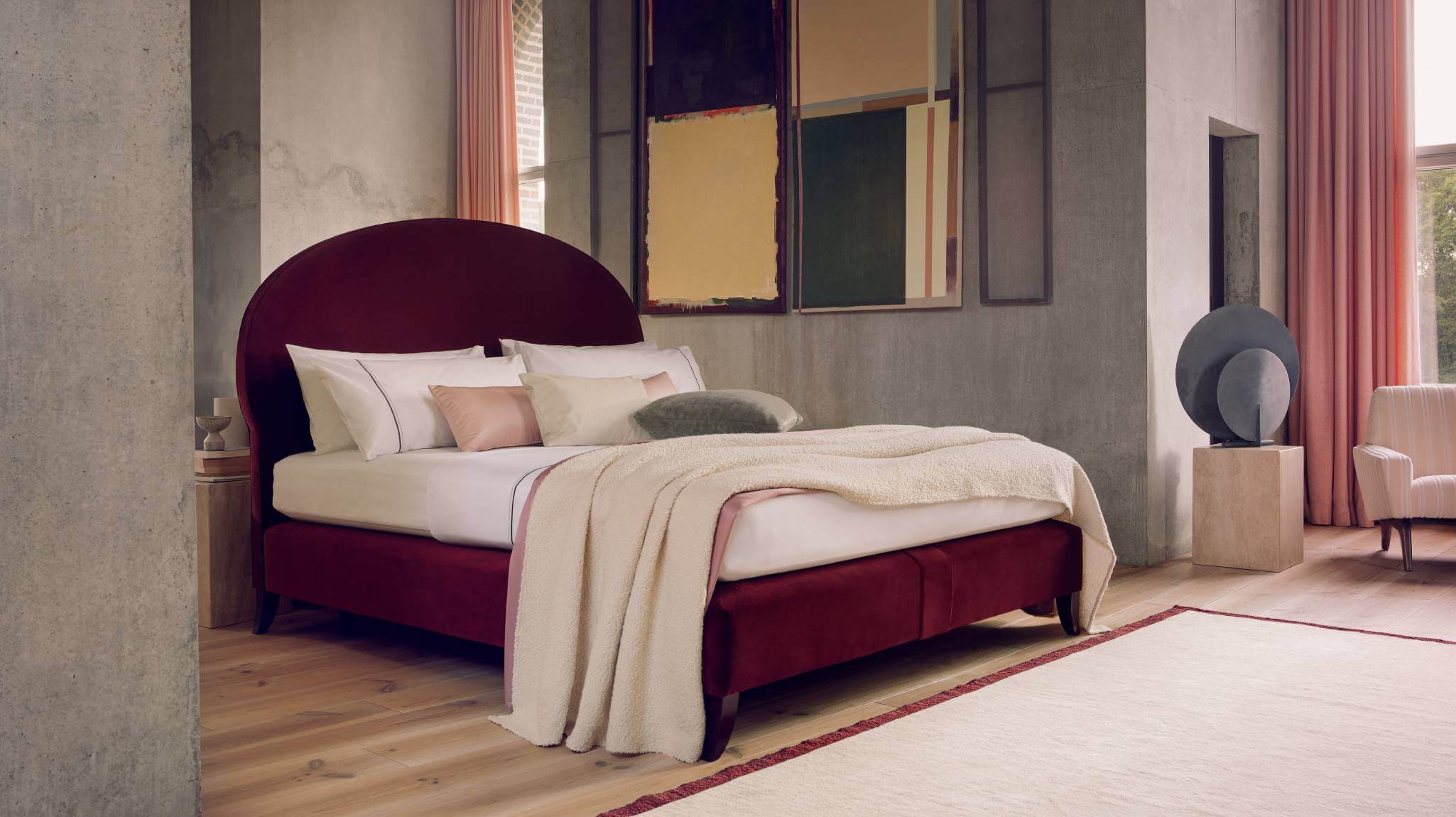
I usually begin by choosing colours that work tonally with the headboard, and then add another contrasting colour to give a little more interest. It could be that a statement chair colour is linked back to the throws and cushions to pull the scheme together.
Adding visual intrigue
Mixing prints, patterns, and textures can feel overwhelming; however, the key to finding the right balance is to work tonally. “Work on a sliding scale – begin with smaller patterns, then build up to larger ones. Blues and greens work well in bedrooms, and stripes pair wonderfully with both traditional and contemporary interiors,” she tells us. When it comes to finding the right fabrics, “Kvadrat, Dedar, and Kirkby are all of a very high quality and have fantastic colour ranges as well as a variety of modern patterns and textures,” Sania recommends.
Size matters
While bedding feels more sumptuous when sized up, accessories follow a slightly different rule. Sania advises that a mix-and-match approach works best when choosing the final touches. “Begin with two large cushions the same size and colour to anchor your scheme, and then add a bolster and perhaps a small cushion in a fun colour or pattern,” she suggests. This allows you to create depth and add playful, unexpected elements without overshadowing the design of the bed and taking away from its luxurious feel.
To find more inspiration, read the story of how our team, along with Sania’s unique eye, brought our iconic designs to life at London’s Pitzhanger Manor.
Choosing the right throws is all about layering. So, a heavier fabric texture such as velvet or knit may work best at the bottom as a base, then a lighter fabric with a softer flow will look best layered on top.
Find more design inspiration
The key interior design trends in 2023
From infusing your home with joy-inducing colour to adding organic shapes that create a relaxing ambience, explore the key interior design trends that’ll awaken your creativity.

Maison&Objet, the bi-annual design fair which takes place in Paris chose the simple words ‘take care’ as this year’s slogan. Paying homage to slow living, the show emphasised the importance of a mindful and sustainable approach to design. Along with Paris Deco Off, these shows are amongst the most influential design events of the year. Together, they pave the way for how interior design and architecture will look in the next year.
Your home reflects who you are. Through your favourite art, bespoke furniture, and clever use of colour, you can enrich it with your personality. While some trends come and go, we hand-picked the ideas that encompass craft and longevity that’ll elevate the timeless design of your home.
Forget sharp lines and monochromatic colour combinations. This year’s trends embrace organic shapes, bring nature indoors and add dopamine-inducing pops of colour. Discover the key interior design trends that’ll awaken your creativity.
The brazenly buoyant luxury sector is exploring new paths that draw on haute-couture artisan craftsmanship and high technology on the one hand, and pop culture and the values of inclusivity on the other.

The emergence of organic shapes
The last few decades celebrated modern and angular shapes and silhouettes. Excitingly, in 2023 we can expect to see soft and organic lines return to the limelight. Taking inspiration from the 70s, furniture, lighting and accessories will mimic shapes found in nature. From a delicate outline of a cloud to the dynamic movement of an ocean wave. Influenced by a more relaxed attitude to sophistication, this trend brings a playful, yet polished feeling indoors.
When upholstered in complementing fabrics, these organic shapes perfectly combine the retro aesthetic of the 70s with a modern twist. Our Amelia design is a great way to showcase how dynamically organic a headboard can be, bringing a welcoming ambience into the bedroom. Through a more tranquil approach to lighting, architecture, and soft furnishing, you can embrace nature in a unique way.
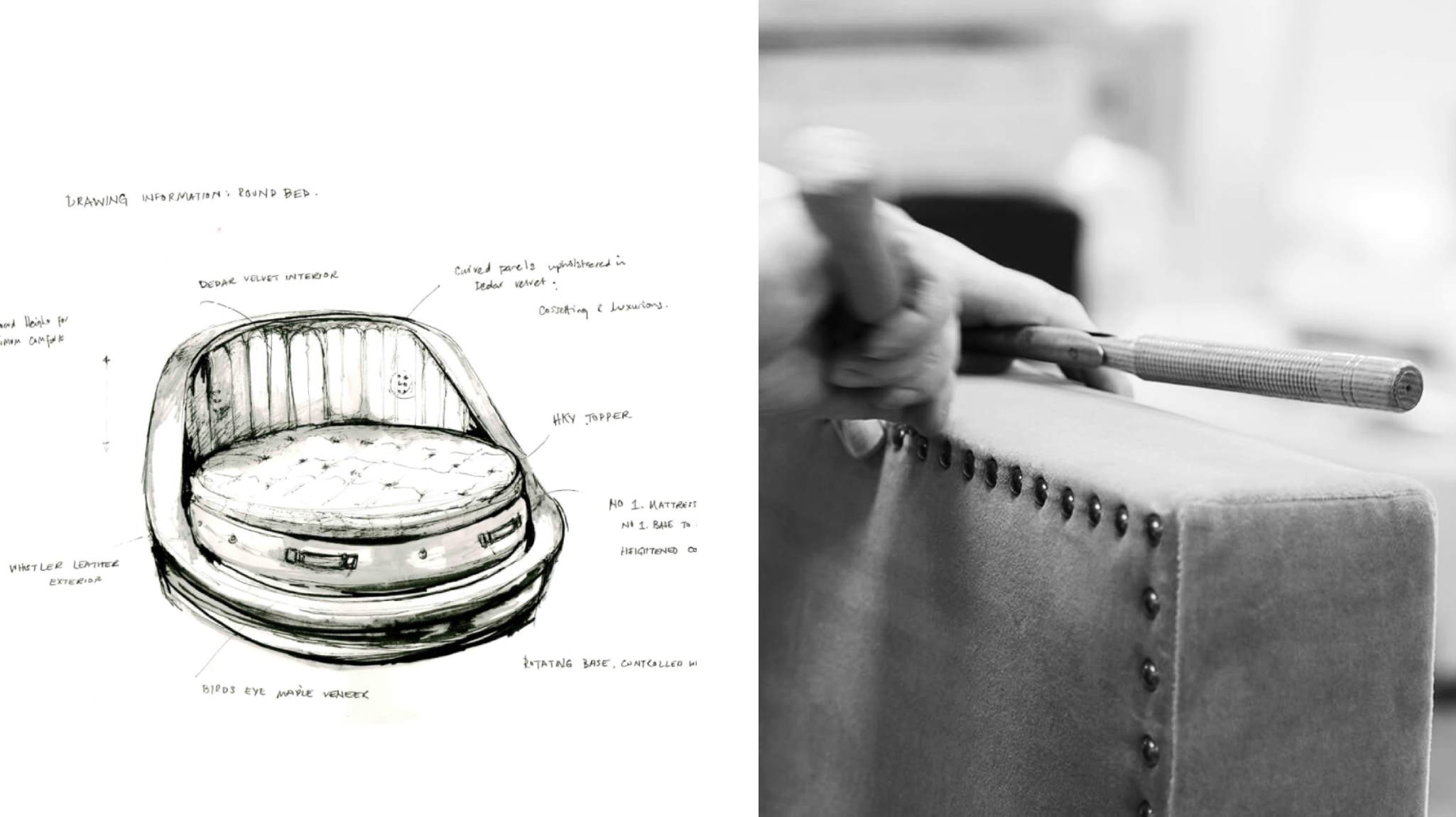
Revival of the handmade
The charm of handmade items is enjoying a revival, thanks to their incomparable quality and longevity. From beautifully crafted furniture using sustainably sourced materials, to recycled textiles, which have been lovingly refined. Artisanal items tell a story that mass-made products can’t. This resurgence marries nostalgic elements of century-old craft with the needs of the modern world. Resulting in completely personal and bespoke products that combine art and function.
As the heart of your home, bedroom is the perfect place to infuse with the charm of the handmade. From small, decorative elements like lamps and night tables, to investing in a bed that becomes the room’s focal point. Whilst elevating the design of your bedroom, a bespoke bed will also improve the quality of your sleep. Combine the revival of craft with a sustainable approach by opting for a plant-based bed. Providing the comfort of the classic Savoir beds, The Reformer draws on sustainable ingredients found in nature. These materials respond to the resurgence of the focus on our well-being and sleep. Investing in a plant-based bed is a charming way to prioritise your health.

Striking colour
First noted in fashion, which inevitably translated into interior design, dopamine-inducing colours are set to be all around us in 2023. Whether through the addition of post-modernistic art or boldly painted walls, this trend will bring a joy-inducing ambience into your home. With jewel tones adorning rich textiles like velvet, you can add an eccentric feeling of decadence.
If painting an entire room bright red sounds a little too bold, you can instead use it as an accent. From ceramic vases and sconces in earthy hues to textiles and wallcoverings that beautifully combine lighter colours with these vibrant tones. Whilst adding joy and a spark of energy to your home, they’ll become the perfect conversation starter for your guests.

Art is everywhere
Another delightful trend emerging this year is all about infusing your interiors with art. Whether by using plants as sculptures through the Japanese art of bonsai, or textiles inspired by works of great masters. The ways in which you can incorporate art into your home are endlessly charming.
Rubelli, a renowned Italian textile brand with whom we’ve collaborated on many designs, focuses their 2023 collection on ‘Fragments of Venice’, where “the past and the present live together harmoniously”. Showcasing their abstract interpretation, these refined textiles tie in authenticity and elegance. So, for those seeking to incorporate more art into their home, textiles are an easy yet impactful way to start.

Our collaboration with the National Gallery in London offers a unique opportunity to adorn the paintings of great masters onto your bed. From Monet’s ‘Water Lilies’ to Redon’s ‘Ophelia among the Flowers’. The paintings are digitally printed onto the fabric, which is then upholstered onto the headboard and the base of the bed. In 2023, art no longer belongs just on our walls.

Whether it already found its way into your home or not, bouclé is here to stay. The sumptuous fabric continues to adorn furnishings – from organically shaped sofas and chairs to bespoke beds. Its unique softness embodies the slowed-down approach to design in 2023. Rich, textural materials are also coming back into the forefront, taking over delicate silks and linens. Our Winston design nods to the revival of the 70s with its unique upholstery in textural cognac leather. The back of its headboard is adorned in a beautiful geometric pattern using the Italian fabric by Nelson, gently nodding at the nostalgia of Art Deco design.
Unexpectedly, embroidery also made an appearance at this year’s design shows. Bright and colourful beads, hand embroidered onto headboards, lampshades and cushions wonderfully highlight the artisanal technique, adding texture to everyday objects and materials.
With the reintroduction of materials like velvet and leather and artisanal methods, you can elevate your home whilst staying true to your preferred aesthetic. Although trends change, natural materials and craftsmanship are timeless tools that help you infuse personality into your home.
For more design ideas read our latest article, where we discover how WINCH Interior Design studio infuses their projects with luxury and comfort.
